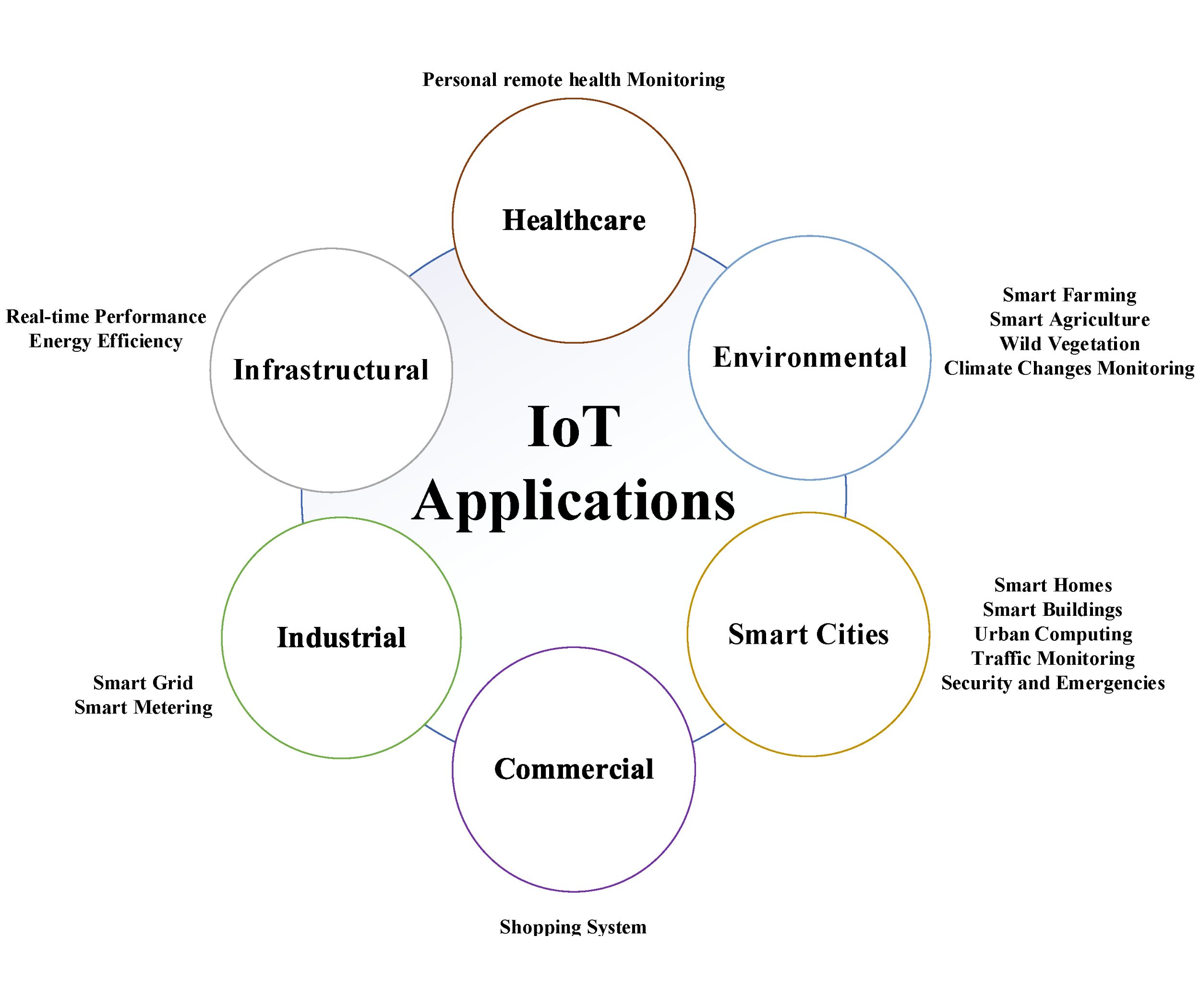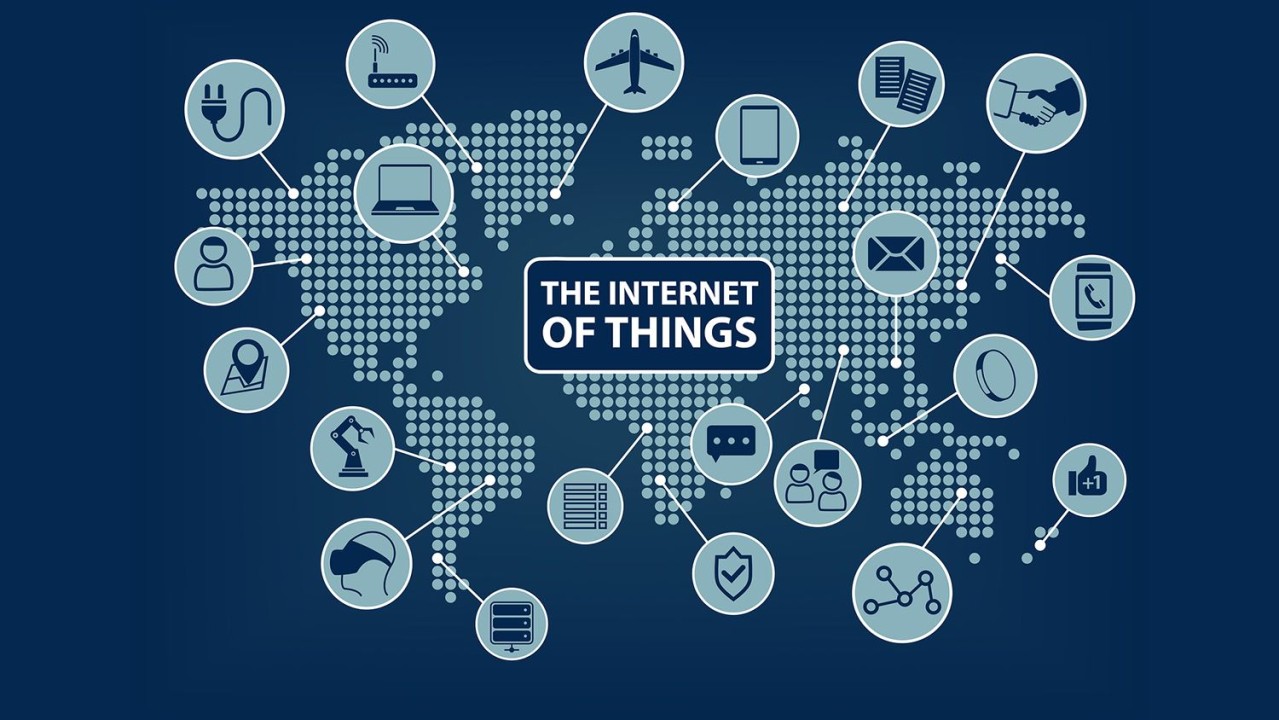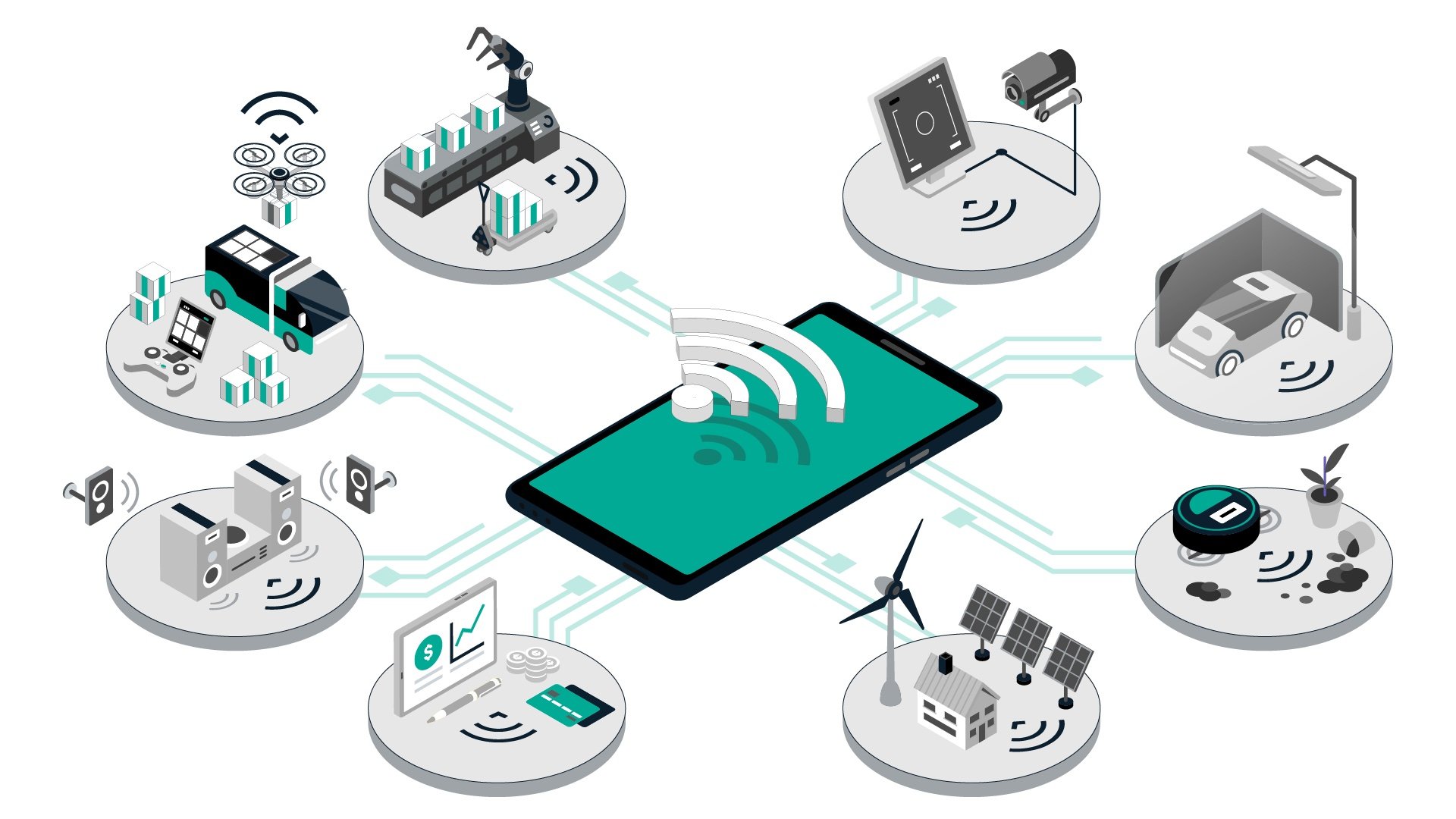Introduction
In the rapidly evolving world of technology, the Internet of Things (IoT) has emerged as a transformative force. It connects devices, sensors, and machines, allowing them to communicate and share data seamlessly. With IoT, everyday objects can be transformed into smart devices, capable of gathering and analyzing information to make our lives easier and more efficient. One of the key technologies that enable the growth of IoT is Narrowband Internet of Things (NB-IoT).
NB-IoT is a low-power wide-area (LPWA) wireless technology specifically designed for IoT applications. It provides a reliable, cost-effective, and energy-efficient solution for connecting a large number of devices over long distances. With its ability to penetrate challenging environments and achieve extended coverage, NB-IoT opens up new possibilities for applications that require low-bandwidth connectivity, such as smart cities, agriculture, healthcare, asset tracking, and more.
This article will delve into the world of NB-IoT, exploring its underlying technology, key features, applications, advantages, and challenges. By understanding the capabilities and limitations of NB-IoT, businesses and individuals can harness its potential to drive innovation and reshape the way we interact with the digital world.
What is IoT?
The Internet of Things (IoT) is a network of interconnected physical devices, vehicles, appliances, and other objects that are embedded with sensors, software, and network connectivity. These devices collect and exchange data, allowing them to communicate and interact with each other without human intervention. The concept behind IoT is to create a vast web of interconnected devices that can be remotely monitored, controlled, and optimized to enhance efficiency, convenience, and productivity.
IoT enables devices to gather and share real-time data, enabling organizations and individuals to make informed decisions and automate processes. For example, in a smart home scenario, IoT devices like thermostats, lights, and security systems can communicate with each other to create a comfortable and secure living environment. In industries, IoT technologies can enable predictive maintenance of machines, optimize supply chains, and monitor environmental conditions.
The potential applications of IoT are vast and varied. Smart cities can leverage IoT to improve traffic management, reduce energy consumption, and enhance public safety. Healthcare providers can use IoT to remotely monitor patients and deliver personalized care. Agriculture can benefit from IoT by optimizing irrigation, monitoring soil conditions, and increasing crop yields. With the rapid growth of IoT, the number of connected devices is expected to reach billions in the coming years, profoundly influencing various aspects of our lives.
What is NB-IoT?
Narrowband Internet of Things (NB-IoT) is a wireless communication technology specifically designed for IoT applications. It is a low-power wide-area (LPWA) network technology that operates in licensed spectrum, ensuring secure and reliable connectivity. NB-IoT provides excellent coverage, allowing devices to communicate efficiently even in challenging environments such as underground basements, remote rural areas, or deep inside buildings.
NB-IoT offers several advantages compared to other wireless technologies used in IoT. One of the key benefits is its energy efficiency. NB-IoT devices have long battery life, enabling them to operate for years without the need for frequent battery replacements. This makes NB-IoT ideal for applications that require low-power operation, such as smart meters, wearables, and asset tracking devices.
Another important feature of NB-IoT is its support for a large number of devices and scalability. NB-IoT networks can handle massive device deployments, making them suitable for applications that involve deploying thousands or even millions of connected devices. Additionally, NB-IoT offers a high level of security to protect sensitive data transmitted over the network, ensuring the privacy and integrity of IoT applications.
NB-IoT operates in licensed spectrum bands, ensuring interference-free communication and better quality of service compared to unlicensed spectrum technologies such as Wi-Fi or Bluetooth. It provides improved coverage compared to traditional cellular networks, allowing devices to connect even in areas with weak signal strength.
Furthermore, NB-IoT is a cost-effective solution for IoT deployments. The technology utilizes existing cellular infrastructure, enabling network operators to leverage their existing investments. The deployment of NB-IoT networks is relatively straightforward, requiring minimal additional infrastructure and providing a cost-effective option for IoT connectivity.
How Does NB-IoT Work?
NB-IoT utilizes the existing cellular network infrastructure to provide connectivity for IoT devices. It is based on the GSM (Global System for Mobile Communications) standard, which has been widely adopted around the world. NB-IoT operates in the licensed spectrum, ensuring secure and interference-free communication.
NB-IoT incorporates several key technologies to optimize performance and efficiency. The technology uses narrowband radio frequency channels to transmit data, which allows for efficient utilization of the available spectrum. This ensures that multiple IoT devices can share the same channel without causing interference to each other.
NB-IoT uses a simplified protocol stack to minimize complexity and power consumption. It uses a resource allocation mechanism called “discontinuous reception” that allows IoT devices to conserve energy by switching off their receivers for most of the time and only waking up at scheduled intervals to check for incoming data. This significantly extends the battery life of NB-IoT devices, making them suitable for applications that require long operational lifetimes.
NB-IoT also supports power-saving mode, where devices can enter into an even deeper power-saving state when they are not actively transmitting or receiving data. This mode enables devices to operate for several years on a single battery charge, making NB-IoT an ideal choice for applications where devices are deployed in remote or hard-to-reach locations.
One of the essential features of NB-IoT is its ability to provide reliable coverage even in challenging environments. The technology uses advanced receiver techniques to achieve higher sensitivity, enabling devices to connect and transmit data over long distances and in areas with weak signal strength. This makes NB-IoT suitable for applications that require wide coverage, such as smart agriculture, environmental monitoring, or asset tracking.
In summary, NB-IoT works by leveraging the existing cellular network infrastructure to provide secure, energy-efficient, and cost-effective connectivity for IoT devices. By utilizing narrowband channels, implementing power-saving mechanisms, and ensuring extended coverage, NB-IoT enables a wide range of IoT applications to thrive and contribute to the growth of the interconnected world.+
Key Features of NB-IoT
Narrowband Internet of Things (NB-IoT) offers several key features that make it a compelling choice for IoT connectivity. These features provide a foundation for reliable, efficient, and scalable IoT deployments. Let’s explore some of the key features of NB-IoT:
- Low Power Consumption: NB-IoT devices are designed to operate on minimal power, ensuring long battery life. This is achieved through power-saving mechanisms such as discontinuous reception and power-saving mode, allowing devices to conserve energy and operate autonomously for years without the need for frequent battery replacements.
- Extended Coverage: NB-IoT offers exceptional coverage, allowing devices to connect and transmit data even in challenging environments with weak signal strength. This makes it suitable for applications that require connectivity in remote areas, underground basements, or deep inside buildings.
- Massive Device Connectivity: NB-IoT networks can handle massive deployments of devices, supporting thousands or even millions of connected devices in a single network. This scalability makes NB-IoT an ideal choice for applications that require a large number of devices, such as smart cities or industrial IoT.
- Secure and Reliable: NB-IoT incorporates advanced security measures to protect data transmitted over the network. It ensures the privacy and integrity of IoT applications through authentication, encryption, and other security mechanisms, making it a trusted choice for applications that handle sensitive information.
- Cost-Effective Deployment: NB-IoT leverages existing cellular network infrastructure, minimizing the need for additional infrastructure investments. This makes it a cost-effective solution for IoT connectivity, allowing businesses and organizations to leverage their existing resources and infrastructure.
- Interference-Free Communication: NB-IoT operates in licensed spectrum bands, ensuring interference-free communication and better quality of service compared to unlicensed spectrum technologies. This guarantees reliable connectivity and a stable network environment for IoT devices.
- Global Standard: NB-IoT is based on the GSM standard, which has been widely adopted around the world. This global standardization ensures interoperability between different NB-IoT devices and networks, enabling seamless connectivity and communication on a global scale.
These key features of NB-IoT enable businesses and organizations to build robust and scalable IoT solutions. Whether it’s improving efficiency in industrial processes, enhancing safety in smart cities, or optimizing resource management in agriculture, NB-IoT provides a reliable and efficient connectivity solution to drive innovation and transform industries.
Applications of NB-IoT
Narrowband Internet of Things (NB-IoT) has vast applications across various industries and sectors. Its low power consumption, extended coverage, and cost-effectiveness make it an ideal solution for a wide range of IoT deployments. Let’s explore some of the key applications of NB-IoT:
- Smart Cities: NB-IoT enables the creation of smart cities by connecting and monitoring various infrastructure components. It can be used for traffic management, parking systems, waste management, environmental monitoring, and public safety applications.
- Agriculture: NB-IoT can revolutionize agriculture by optimizing irrigation systems, monitoring soil conditions, and tracking livestock. It can provide real-time data on temperature, humidity, soil moisture, and other environmental factors, helping farmers make informed decisions to increase crop yield and reduce water usage.
- Asset Tracking: NB-IoT enables real-time tracking and monitoring of assets such as vehicles, containers, and valuable goods. This technology ensures accurate location data, improves supply chain efficiency, and helps prevent theft or loss of assets.
- Smart Metering: NB-IoT can enhance utility metering systems by enabling remote monitoring and control of energy consumption, water usage, and gas metering. It eliminates the need for manual meter reading and provides accurate and real-time data for efficient resource management.
- Healthcare: NB-IoT can play a significant role in remote patient monitoring, telemedicine, and tracking medical devices. It allows healthcare providers to remotely monitor patients’ vital signs, enabling timely intervention and reducing hospital visits.
- Environmental Monitoring: NB-IoT can monitor and collect data on air quality, water quality, noise levels, and other environmental parameters. This information can help in improving environmental management strategies, urban planning, and identifying pollution sources.
- Industrial IoT: NB-IoT is well-suited for industrial applications such as predictive maintenance, asset management, and process optimization. It enables real-time monitoring of machinery, detects anomalies, and facilitates proactive maintenance to avoid costly downtime.
These are just a few examples of the broad range of applications for NB-IoT. As the technology continues to evolve and mature, it will unlock even more opportunities for innovation and transformation across industries. By leveraging the reliable connectivity, energy efficiency, and scalability of NB-IoT, businesses and organizations can unlock the full potential of IoT applications and drive productivity, efficiency, and sustainability.
Advantages of NB-IoT
Narrowband Internet of Things (NB-IoT) offers several advantages that make it a preferred choice for IoT connectivity. Its unique features and capabilities provide numerous benefits for businesses, individuals, and society as a whole. Let’s explore some of the key advantages of NB-IoT:
- Low Power Consumption: One of the main advantages of NB-IoT is its low power consumption. NB-IoT devices are designed to operate on minimal power, allowing them to have long battery life. This makes NB-IoT suitable for applications that require devices to be deployed in remote or hard-to-reach locations where frequent battery replacements are not feasible.
- Extended Coverage: NB-IoT provides excellent coverage even in challenging environments with weak signal strength. It has the ability to penetrate barriers such as walls and structures, making it ideal for applications in urban areas or deep inside buildings. The extended coverage ensures reliable connectivity, allowing devices to transmit data over long distances without signal degradation.
- Cost-Effectiveness: NB-IoT is a cost-effective solution for IoT deployments. It leverages existing cellular network infrastructure, resulting in reduced infrastructure costs compared to building separate networks for IoT connectivity. This makes NB-IoT an attractive option for businesses and organizations looking to deploy IoT solutions while minimizing upfront investments.
- Scalability: NB-IoT networks can handle massive deployments of devices, making them highly scalable. They can support thousands or even millions of devices in a single network, allowing for the growth and expansion of IoT applications. This scalability is crucial for industries and sectors that require a large number of connected devices, such as smart cities or industrial IoT.
- Reliability and Security: NB-IoT ensures reliable and secure connectivity for IoT devices. It operates in licensed spectrum, offering interference-free communication and better quality of service compared to unlicensed spectrum technologies. NB-IoT also incorporates advanced security measures to protect data transmitted over the network, ensuring the privacy and integrity of IoT applications.
- Global Standardization: NB-IoT is based on the GSM standard, which has been widely adopted around the world. This global standardization ensures interoperability between different NB-IoT devices and networks, enabling seamless connectivity and communication on a global scale. It allows for the deployment of NB-IoT solutions across borders without compatibility issues.
These advantages highlight the strengths of NB-IoT as a reliable, efficient, and scalable IoT connectivity solution. Whether it’s optimizing energy consumption, enabling remote monitoring, or improving industrial processes, NB-IoT offers a wide range of benefits that contribute to the growth and success of IoT applications across various industries and sectors.
Challenges of NB-IoT
While Narrowband Internet of Things (NB-IoT) offers numerous advantages, there are also some challenges that need to be considered when deploying and utilizing this technology. These challenges mainly revolve around technical limitations, infrastructure requirements, and regulatory considerations. Let’s explore some of the key challenges of NB-IoT:
- Network Coverage: While NB-IoT provides extended coverage, there may still be areas where network coverage is limited or unavailable. This can pose challenges for deploying NB-IoT devices in remote or rural areas where network infrastructure may not be as extensive as in urban areas.
- Device Compatibility: Ensuring device compatibility can be a challenge in NB-IoT deployments. Different devices may have different versions of NB-IoT technology or may not be fully compatible with specific NB-IoT networks. This can lead to compatibility issues and limitations in the choice of devices for a particular application.
- Deployment Costs: While NB-IoT leverages existing cellular network infrastructure, there may still be some deployment costs involved, such as setting up base stations or upgrading network equipment. These costs can vary depending on the scale of the deployment and may require additional investments for optimal coverage and performance.
- Data Security: As with any IoT technology, data security is a critical concern in NB-IoT deployments. Securing the data transmitted over the network and protecting devices from cyber threats and unauthorized access is of utmost importance. Implementing robust security measures and following best practices are essential in addressing these challenges.
- Regulatory Considerations: NB-IoT operates in licensed spectrum bands, which are regulated by governmental authorities. Compliance with regulatory requirements and obtaining the necessary licenses and permits can be a challenge, especially when deploying NB-IoT solutions across different regions or countries.
- Interference Concerns: While NB-IoT operates in licensed spectrum, there may still be some limited interference concerns, particularly in areas where multiple wireless technologies coexist. Careful planning and management of spectrum allocation are necessary to minimize interference and ensure reliable connectivity.
These challenges should be carefully considered and addressed when planning and implementing NB-IoT deployments. By understanding and mitigating these challenges, organizations can effectively leverage the advantages of NB-IoT while ensuring a secure, reliable, and scalable IoT ecosystem.
Conclusion
Narrowband Internet of Things (NB-IoT) is a transformative technology that is revolutionizing the way we connect and interact with the world around us. With its low power consumption, extended coverage, and cost-effectiveness, NB-IoT has become a preferred choice for IoT connectivity across various industries.
The key features of NB-IoT, including its ability to support massive device connectivity, provide reliable coverage, and ensure secure communication, make it an ideal solution for a wide range of applications. From smart cities and agriculture to asset tracking and healthcare, NB-IoT offers unprecedented opportunities for innovation and efficiency.
Despite its advantages, NB-IoT does come with some challenges, such as network coverage limitations, device compatibility issues, and regulatory considerations. However, these challenges can be overcome through careful planning, technological advancements, and collaboration between stakeholders.
As NB-IoT continues to evolve and mature, it promises to revolutionize industries, enhance productivity, and improve quality of life. The global standardization of NB-IoT and its interoperability ensure seamless connectivity and communication on a global scale.
In conclusion, NB-IoT holds tremendous potential to unlock new possibilities in the world of IoT. By leveraging its advantages, addressing its challenges, and harnessing its capabilities, businesses and individuals can transform their operations, improve efficiency, and create a more connected and sustainable future.

























